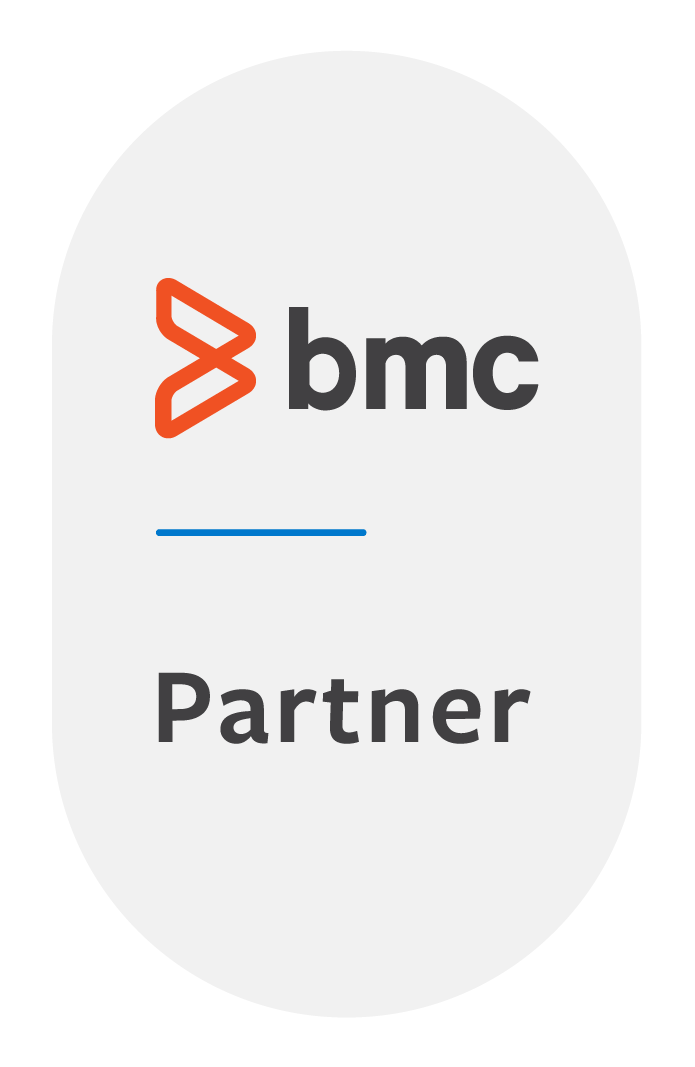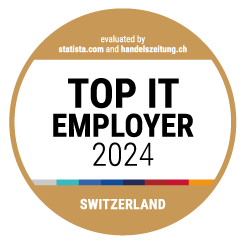Companies are increasingly challenged to keep up with the rapid developments of digitalization. We present five currently important IT trends that you can use to your advantage to optimize your business, align your technology investments with your business goals and create growth opportunities with sustainable investments. In doing so, prioritize those technology trends that are most important to your business success!
Low-code for faster, more cost-effective development processes
One of the top trends in digitization is low-code. Low-code development means developing applications without programming skills. With the help of standardized modules, end users, business analysts or database administrators, for example, can put together applications for desktop, web and mobile devices according to their needs without in-depth developer know-how and without writing programming code. But programmers are also taking advantage of the efficiency gains offered by low-code development for their work. Many companies see great potential in this for saving costs and time in application development.
Low-code platforms are suitable, for example, for the rapid implementation of simple, repetitive processes, but not for demanding software projects, for which professional programmers are still required. Used in the right place, low-code development platforms have the ability to contribute decisively to a company’s success.
Our technology partner ServiceNow is one of the leading providers of low-code platforms. ServiceNow’s low-code engine, App Engine Studio, is part of the Creator Workflows area for building workflow apps within the ServiceNow platform. It provides pre-built workflow building blocks and tools for creating data models, service catalogs, customizable user interfaces and process automation.
Hyperautomation: seamless integration of automation technologies across business processes
The list of digital trends also includes the buzzword hyperautomation. While traditional automation is about automating individual tasks or processes within a specific business application, hyperautomation refers to automation across departments or across a variety of business processes. In this case, automated processes are combined to form a cross-departmental business process. An example of this would be the automatic ordering of a product when the stock level falls below a certain lower limit. This order is carried out independently by the enterprise resource planning system. With hyperautomation, the order would also trigger actions in sales and marketing to market the product.
Hyperautomation enables companies to make business processes faster, more efficient and less costly by reducing or even eliminating manual activities. This can lead to higher productivity, better customer service, faster time to market for new products and services, and ultimately a competitive advantage.
Relief through cloud services: less time, costs and administrative effort
Digital transformation trends such as cloud services are particularly exciting because cloud providers take over those tasks involved in developing applications that companies would otherwise take care of themselves if they also managed the servers required to do so. These time-consuming and costly tasks include server management, scaling, infrastructure, monitoring and maintenance. The cloud enables companies to use IT resources such as storage space, computing power and applications flexibly and scalably as needed without having to purchase expensive hardware and infrastructure. Since servers incur costs even when they do not receive a request, a switch to the cloud makes sense for budget reasons alone, because the cloud only generates costs when it is used.
Cloud services are usually accessible via the Internet and thus offer high flexibility and mobility. In addition, the cloud also enables teams in different locations to work together, thus increasing productivity. Another advantage is security, as cloud providers usually have high standards in terms of data protection and IT security.
From processing customer inquiries to fraud detection: artificial intelligence as machine support
Artificial intelligence (AI) is a major trend in digitization. AI refers to the ability of machines to simulate human-like intelligence and decision-making. AI technologies include machine learning, deep learning, natural language processing (NLP), and robotics.
The applications of AI are almost limitless and its role in digitization will become increasingly important in the future. Here are five examples of artificial intelligence in digitization:
- Chatbots: companies use chatbots powered by AI to automatically answer customer questions and help solve problems – 24/7, instantly and quickly. ChatGPT from OpenAI is such a chatbot, as it is able to understand and respond to natural human speech. However, it can be used in many areas, e.g. as a text generator, as an answering system for questions, as an idea generator or as a programming assistant.
- Voice assistants: voice assistants use AI to recognize spoken language and respond to questions.
- Automated translation: AI-based translation enables users to translate text into different languages in real time.
- Predictive maintenance: companies use artificial intelligence to anticipate and plan the maintenance needs of machinery and equipment.
- Fraud detection: AI-based fraud detection software is used by companies such as banks, insurance companies and online stores to identify fraudulent activities.
Technology and sustainability: IT as an interface for more sustainability in the company
Companies that act sustainably ideally include all areas of the company in their sustainability strategy. Ecological sustainability therefore also plays a significant role in the company’s own IT department, for example when it comes to technologies for reducing energy in IT services and increasing the efficiency of IT services.
However, sustainable technology encompasses a range of solutions and measures to ensure the operational and financial performance of a company in the long term, to meet the increasing demands for sustainability in the company, and to pave the way toward more growth and new, sustainable business models, services, and products.
Sustainability in internal IT processes focuses on minimizing resources and maximizing performance, such as reducing power consumption, promoting the circular economy through recycling, or outsourcing IT operations to sustainable operators. Emissions management software also makes it easier for companies to collect, analyze and report on past, current and future emissions. This makes it easier to derive measures to reduce greenhouse gases, among other things.
Conclusion
The tech trends presented are already familiar topics in the field of digitization, but they are being further developed and refined so that the technologies are even better adapted to the needs of companies and customers and increasingly suitable for everyday use. The IT trends around low-code, hyperautomation, cloud, artificial intelligence and sustainability offer enough potential for development and expansion that it remains exciting to see where the journey will lead.
Leadership Trends Report from ServiceNow: trends in IT services, cybersecurity and asset management
Finally, as an official partner of ServiceNow in Switzerland, we encourage you to read the Leadership Trends Report in ServiceNow’s e-book “Leadership Trends: IT Excellence.” In it, ServiceNow takes a look at the trends, challenges and opportunities that will define IT excellence from 2022. Download this roadmap for innovation and automation in IT services, cybersecurity, and asset management for free now and learn more about technology challenges and priorities such as automating IT services, transforming security operations, and reducing IT resource costs!











